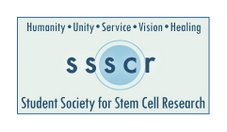Steve Stice, who has dedicated his research using embryonic stem
cells to improving the lives of people with degenerative diseases
and debilitating injuries, newly has discovered the process to
produce billions of neural cells from a few stem cells, could now
aid in national security.
In collaboration with the U.S. Naval Research Laboratory, Stice
hopes to use his recently developed neural cell kits to detect
chemical threats.
Steve Stice, a University of Georgia animal science professor and
Georgia Research Alliance eminent scholar in the UGA College of
Agricultural and Environmental Sciences said that they have a device
that looks like a small tool box that contains neural cells and can
detect changes in their electrical activity, when these cells'
activity is altered, there's something present that shouldn't be and
they don't like it.
Stice's neural cell kits created from human embryonic stem cell
lines last up to six months. "We've never tested to see how far
beyond that they're viable," he said. "It could be much longer."
He has contacted researchers at NRL who had published a paper on the
detection system. He said that they've developed the recording
device, and they have the cells they need. So working together, they
can vastly improve that project.
Stice explained the device. "The monitoring system records
electrical activity in the neural cells, which are usually in a set,
rhythmic pattern," he said, drawing a chart that looks like a
pattern on a heart monitor.
The researchers got support for the project from several
congressmen, including Sen. Johnny Isakson and Georgia Rep. Jack
Kingston.
The current system can detect an agent but it can't identify it. "We
may be able to further develop the system so that for some chemicals
there are signatures that will lead to a future way to rapidly
identify exactly what the chemical is," Stice said.
"Noncell systems available now can detect specified chemicals," he
said. "But this is a broader detection system that will be more
valuable because we don't know what terrorists will hit us with."
Stice feels this detection system is important to troops and
civilians. "There's always a concern for nerve agents and
unintentional effects of warfare where troops are in the way of
chemical agents," he said.
Stem Cell Scientists Found a Way to Fight AIDS
Further Grants from California Stem Cell Agency Will be a Booster
for Embryonic Stem Cell Research
Nerve Cell Transplants may Help Fight Multiple Sclerosis
Human Muscle stem cells fight incontinence
Lawmakers Should Back Up Stem Cell Therapy to Fight Deadly Diseases
Stem Cell That Directly Determines Fate of its Daughters
Development of First Generation Stem Cell Therapies
Stem Cells Join The Fight Against AIDS
Embryonic Stem Cell Therapy is a Real Hope for Those Who are
Suffering form Deadly Incurable Diseases
Children's Cord Blood is a Form of Biological Insurance
«¤»¥«¤»§«¤»¥«¤»§«¤»¥«¤»«¤»¥«¤»§«¤»¥«¤»§«¤»¥«
¯¯¯¯¯¯¯¯¯¯¯¯¯¯¯¯¯¯¯¯¯¯¯¯¯¯¯¯¯¯¯¯¯¯¯¯¯¯¯¯¯¯¯¯
StemCells subscribers may also be interested in these sites:
Children's Neurobiological Solutions
http://www.CNSfoundation.org/
Cord Blood Registry
http://www.CordBlood.com/at.cgi?a=150123
The CNS Healing Group
http://groups.yahoo.com/group/CNS_Healing
____________________________________________
«¤»¥«¤»§«¤»¥«¤»§«¤»¥«¤»«¤»¥«¤»§«¤»¥«¤»§«¤»¥«
¯¯¯¯¯¯¯¯¯¯¯¯¯¯¯¯¯¯¯¯¯¯¯¯¯¯¯¯¯¯¯¯¯¯¯¯¯¯¯¯¯¯¯¯
Change settings via the Web (Yahoo! ID required)
Change settings via email: Switch delivery to Daily Digest | Switch format to Traditional
Visit Your Group | Yahoo! Groups Terms of Use | Unsubscribe
__,_._,___










